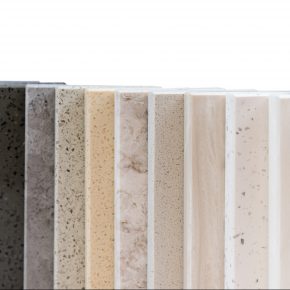
COSHH Compliance in the building industry: What you need to know
Hannah Spruce, an author for High Speed Training, discusses Control of Substances Hazardous to Health (COSHH) hazards in the construction industry, their serious health implications, and preventative measures.
Working in the construction industry is tough, physical work. It exposes you to harmful substances and radiation from the sun, putting you at risk of skin diseases such as contact dermatitis, lung disease such as silicosis, asthma, chemical burns, COPD (chronic obstructive pulmonary disease), and skin, bladder, lung, and stomach cancer amongst a multitude of others.
Most hazardous materials enter the body through skin contact and inhalation; their main pathways are your lungs, airways, skin, eyes, and mouth. Common hazardous substances in construction are:
- Cement based products such as concrete and mortar.
- Microscopic organisms such as bacteria, viruses and fungi.
- Carbon monoxide.
- Lead present in older buildings or specialist materials.
- Construction dust from cutting and breaking: stone, concrete or brick.
- Fume-laden air from metalworking fluids and other solvents like paints, thinners and glue.
The risks from these substances are manageable, and injuries and deaths are preventable. Identify and assess the risks so that they can be controlled and prevented where possible.
Construction dust
Regularly breathing or ingesting dust can lead to some very serious health risks. Tasks such as those listed below can cause the release of harmful particles into the air and onto your clothing:
- Cutting paving blocks, kerbs, and flags.
- Chasing concrete and raking mortar.
- Cutting roof tiles.
- Scrabbling or grinding.
- Soft strip demolition.
- Dry sweeping.
- Cutting and sanding wood.
- Sanding taped and covered plasterboard joints.
Different materials such as concrete, mortar, brick, and sandstone all have different amounts of silica which can cause lung disease and lead to lung cancer. Limiting the amount of dust that workers are exposed to is vital for preventing harms. Vacuum extraction and using water to damp down dust clouds can prevent exposure. Where possible, though, you should try to use the right sized building materials, use less powerful tools, and use a different method of work if possible.
Isocyanates
Isocyanates are a chemical compound and a powerful irritant used in the manufacture of building insulation materials such as foams, fibres and floorings as well as in paints, protective coatings, and glues. Inhaling isocyanates into your lungs can cause irritation of the eyes, nose, and throat, dermatitis and asthma.
If you know a worker is sensitive to isocyanates, prevent them from working in an area where liquids are sprayed so that they are separate from the isocyanate vapours in the air. The more you spray, the greater the risk, so consider how long or if you need to spray materials at all.
Direct contact can cause skin inflammation and can cause sensitivity in workers causing severe asthma.
Solvents
Solvents or volatile organic compounds (VOCs) found in paints, stripping and degreasing fluids, lubricants, and glue can pose significant risks when inhaled. Spraying produces a high exposure to harmful solvents including toluene, xylene, white spirit, acetone and ethyl acetate.
Your first port of call is to check how volatile the solvent is and consider how enclosed the space is. Always try to ventilate an area well where you will be spraying potentially harmful substances.
Low solvent paints applied with a brush or roller in a well-ventilated room are very low risk. However, spraying materials is a higher risk, and a lack of ventilation and a smaller working space contributes to this.
Prolonged contact with liquid solvents can cause burns or dermatitis. Contact with eyes can trigger irritation and inflammation. Short term effects of solvent inhalation include irritation of the eyes, lungs and skin, headaches, nausea, dizziness or light-headedness which can increase the likelihood of accidents.
Harmful Micro-Organisms
Groundwork, demolition, and refurbishment can put workers at risk of inhaling or coming into contact with harmful fungi, bacteria, and viruses. Taking rest breaks away from the work area and making sure there are adequate welfare facilities for maintaining hygiene are important preventative measures.
Task-specific harms include:
- Demolition and refurbishment work can lead to Aspergillus.
- Contaminated cuts and wounds can cause.
- Work involving water systems can put you at risk from.
- Contaminated buildings and land can contain.
- Needle-stick injuries can cause blood-borne.
- Sewage work can cause hepatitis A.
- Breathing dust or water droplets containing bird droppings can lead to psittacosis.
- Rats can cause leptospirosis and Weil’s disease.
Carbon monoxide
This colourless, tasteless gas is highly poisonous. It is produced by gas appliances and engines when there isn’t sufficient air for them to work correctly. The risk is lowered when areas are well ventilated. Use carbon monoxide detectors when the risk is increased.
Hazards are heightened for workers who are involved with installing new gas appliances, refurbishment that disrupts gas glues or ventilation systems, workers who use petrol power equipment in enclosed spaces, and welfare facility equipment that uses liquefied petroleum gas such as heaters and cookers.
Asbestos
Asbestos is not covered under the HSE’s COSHH regulations but by the Control of Asbestos Regulations 2012. While Asbestos is a harmful substance, it has its own regulations. Asbestos could be present in any building built before the year 2000, and it causes around 5000 deaths a year. Risk reduction measures include reducing dust levels, wearing PPE, and maintaining a ‘clean as you go’ system to minimise asbestos surface contamination.
The HSE has extensive guidance for tradespeople and licensed contractors to help reduce the harmful and fatal consequences of asbestos exposure.
Lead
Lead exposure tends to happen during demolition and dismantling projects. Lead paint was still used up into the 1980’s, and many older buildings from the 1960’s may have lead present. Lead is also covered by different legislation, namely the Control of Lead at Work Regulations 2002.
Exposure to lead has serious health implications causing kidney disease and anaemia. Significant risks of exposure can happen when stripping or preparing leaded paint from doors and windows in older buildings, working with lead on roofs, blast removing old leaded paint, and hot cutting lead or leaded paint in demolition or dismantling operations.
General control measures
The above substances can take many forms such as solids, liquids, vapours, and gases; knowing the form can help you manage the risk they pose.
Where you cannot prevent workers using hazardous substances you should use the appropriate control measures to prevent harm. Depending on the work involved, some suitable control measures are:
- Ventilation of working areas.
- Enforcing the use of overalls, gloves, and eye protection to protect skin and eyes.
- Making sure workers have facilities available for washing.
- Using Respiratory Protective Equipment (RPE) and Personal Protective Equipment (PPE).
- Training first aiders.
- Choosing products containing little or no organic solvents.
- Ensure workers are competently trained and aware of risks before beginning hazardous work.
Latest news

5th March 2025
Glidevale Protect’s Whole House Solution - everything under one roof
Glidevale Protect has launched its Whole House Solution – a new interactive web-based specification tool.
Posted in Air Conditioning, Articles, Building Industry News, Building Products & Structures, Building Services, Building Systems, Ceilings, Damp & Waterproofing, Facility Management & Building Services, Floors, Heating, Ventilation and Air Conditioning - HVAC, Information Technology, Innovations & New Products, Membranes, Posts, Restoration & Refurbishment, Retrofit & Renovation, Roofs, Sustainability & Energy Efficiency, Ventilation, Walls
5th March 2025
Purplex: How to build a winning marketing strategy... clue - don’t rely on luck!
As St Patrick’s Day approaches, Purplex MD and founder Andrew Scott explains why the ‘luck of the Irish’ doesn’t extend into business, especially when it comes to marketing…
Posted in Articles, Building Industry News, Building Services, Information Technology, news, Research & Materials Testing
5th March 2025
Velstone: Solid surface colour trends shaping modern design
Sameer Sawant, Director of Velstone, a leading manufacturer of solid surfaces, discusses how the evolution of colour is transforming the industry – from the rise of bespoke shades to the resurgence of marble-effect finishes.
Posted in Articles, Bathrooms, Bedrooms & Washrooms, Building Industry News, Building Products & Structures, Interior Design & Construction, Interiors, Kitchens, Restoration & Refurbishment, Retrofit & Renovation
4th March 2025
Gilberts Proves How to Balance Cost-Effective Restoration
Hidden talents have been revealed in the renovation of an iconic 1930s art deco building to transform it into a modern entertainment venue – and Gilberts Blackpool ventilation features there…
Posted in Air Conditioning, Articles, Building Industry News, Building Products & Structures, Building Services, Case Studies, Facility Management & Building Services, Heating, Ventilation and Air Conditioning - HVAC, Restoration & Refurbishment, Retrofit & Renovation
 Sign up:
Sign up: